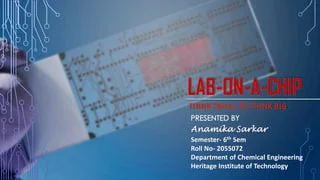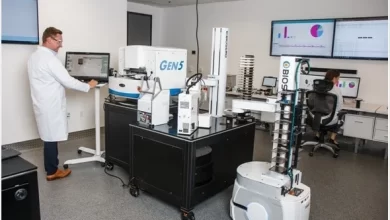Lab-on-a-Chip Devices: Miniaturizing Analysis for Maximum Impact

Introduction:
Lab-on-a-Chip (LoC) devices represent a revolutionary approach to analytical chemistry and biomedical research, offering miniaturized platforms for rapid, efficient, and high-throughput analysis. This article explores the principles, applications, and impact of LoC devices in various fields, highlighting their potential to transform diagnostics, drug discovery, and personalized medicine.
1. Understanding Lab-on-a-Chip Technology:
Lab-on-a-Chip technology integrates multiple laboratory functions onto a single microfluidic device, miniaturizing sample handling, reaction kinetics, and detection processes. These compact platforms leverage microfabrication techniques to create intricate channels, valves, and reservoirs that enable precise control over fluid flow and sample manipulation. By consolidating analytical workflows into portable, scalable devices, LoC technology offers unprecedented versatility and efficiency in experimental design and execution.
2. Applications in Biomedical Diagnostics:
Lab-on-a-Chip devices have revolutionized biomedical diagnostics by enabling rapid, point-of-care testing for a wide range of diseases and conditions. From infectious diseases to cancer biomarkers, LoC platforms offer sensitive, specific, and multiplexed detection capabilities in clinical settings. Miniaturized immunoassays, nucleic acid amplification tests, and cell-based assays empower healthcare professionals to make timely diagnostic decisions, improve patient outcomes, and reduce healthcare costs.
3. Microfluidic Platforms for Drug Discovery:
In the realm of drug discovery, Lab-on-a-Chip technology accelerates the screening of compound libraries, characterization of drug candidates, and optimization of therapeutic formulations. Microfluidic platforms enable high-throughput screening of drug-target interactions, pharmacokinetic studies, and toxicity assessments using minimal reagents and sample volumes. LoC devices also facilitate the development of personalized medicine approaches by enabling rapid profiling of patient samples and drug responses.
4. Point-of-Care Testing in Resource-Limited Settings:
Lab-on-a-Chip devices have significant implications for point-of-care testing in resource-limited settings, where access to traditional laboratory infrastructure is limited. Portable, battery-operated LoC platforms enable decentralized testing for infectious diseases, maternal and child health, and environmental monitoring. By bringing diagnostic capabilities directly to the point of need, these technologies empower communities to take control of their health and well-being.
5. Integration with Emerging Technologies:
Lab-on-a-Chip devices continue to evolve through integration with emerging technologies such as nanotechnology, microfluidics, and biosensors. Nanomaterial-based sensors, microfluidic droplet reactors, and integrated biosensing platforms enhance the sensitivity, specificity, and multiplexing capabilities of LoC devices. Furthermore, advances in smartphone-based detection and wireless connectivity enable real-time data acquisition, remote monitoring, and telemedicine applications, expanding the reach and impact of LoC technology.
6. Challenges and Future Directions:
Despite their immense potential, Lab-on-a-Chip devices face several challenges, including standardization, scalability, and regulatory approval. Ensuring device reliability, reproducibility, and compatibility with existing laboratory workflows remains a priority for researchers and manufacturers. Additionally, addressing concerns related to sample preparation, assay robustness, and data interpretation is critical for widespread adoption and acceptance in clinical and research settings.
Conclusion:
Lab-on-a-Chip devices represent a paradigm shift in analytical chemistry and biomedical research, offering miniaturized platforms for maximum impact. From biomedical diagnostics to drug discovery and point-of-care testing, LoC technology is poised to transform healthcare delivery, improve patient outcomes, and drive innovation in personalized medicine. As researchers continue to push the boundaries of microfluidics, nanotechnology, and biosensing, the future of Lab-on-a-Chip devices holds tremendous promise for addressing global health challenges and advancing scientific discovery.


